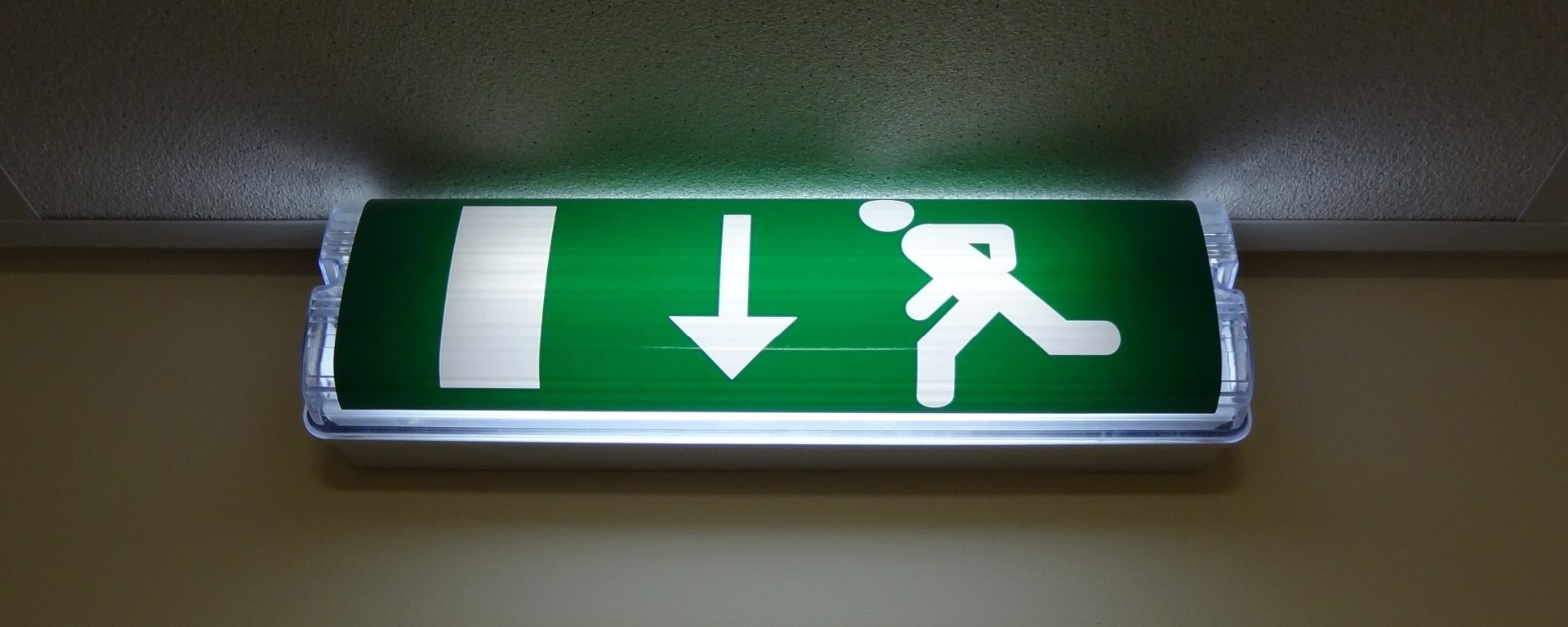Emergency lighting
Posted on 26th January 2023
Your employees, visitors, or tenants could be at risk in the dark and unable to find corridors, stairs and exits if there’s a power cut or other emergency.
That’s why it’s important to make sure your emergency lighting is suitable and working properly.
If you’re a landlord, the new Fire Safety Regulations coming into force in January 2023 include wayfinding signage that is visible in low light conditions for high rise residential buildings and multi-occupied residential buildings that are at least 18metres high or seven or more storeys.
Types of emergency lighting
The most common types of emergency lighting are:
Non-maintained – your emergency light units only come on if there is a mains failure.
Maintained – the units are on all the time using the same lamps for normal and emergency operation.
Sustained – two sets of lamps are used, one operating on the mains supply while the other set uses a battery supply if there is a mains failure.
Testing emergency lighting systems
Emergency lighting testing requirements say that, if you have a central backup system, the indicators on the supply unit should be visually checked every day.
All emergency lighting systems should have a functional test every month that is long enough to check all the lamps without causing damage.
You should also have an annual test for the ‘full rated duration’ of your emergency lights (for example, three hours). Your emergency lights must still be working at the end of this test. If anything isn’t working it will need to be repaired as soon as possible by a qualified person.
Standards for emergency lighting
If you’re in a new building then your emergency lighting will have been installed according to Part L Building Regulations and the minimum British Standard (BS 5266-1: 2016).
For older buildings the emergency lighting might have been fitted long after it was built so it’s a good idea to confirm it meets current requirements by arranging and inspection with a qualified professional.
Things to think about:
If you are having any remodelling work done in your premises you will need to check whether moving doors or walls will affect the suitability and performance of your emergency lighting.
When you complete your annual test you will need to make sure that batteries have fully recharged before you let people back into the building or you will be breaking the law.
You need to include details of your emergency lighting tests as part of your fire risk assessment.
If your emergency lighting isn’t compliant the penalties can be serious (imprisonment and large fines), so it’s important to take advice from a qualified professional.
Speak to the team at MSE if you would like your emergency lighting tested or reviewed.
Share this post:





